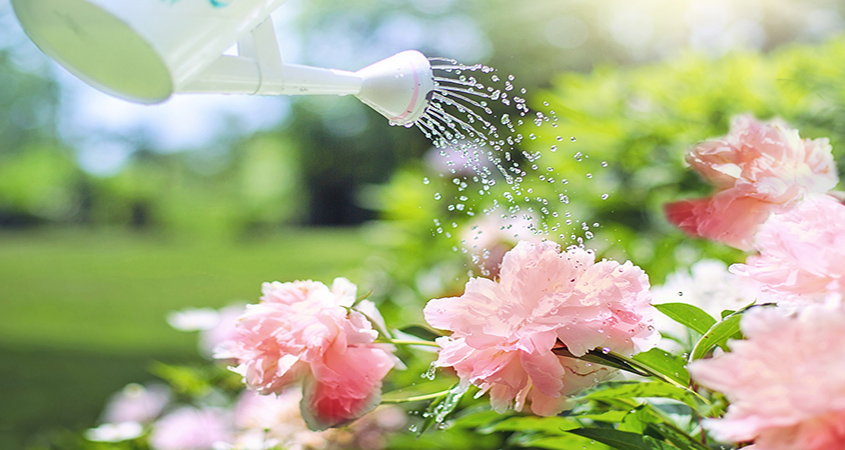Every Drop Counts in the Current California Drought
California is in a drought, with almost half of the state in exceptional drought, the worst level of drought intensity.
California is in a drought, with almost half of the state in exceptional drought, the worst level of drought intensity.
With a situation this significant, many areas of the state are being asked to cut down on water usage. Water is one of Earth’s most valuable resources, and we can’t live without it, which is why every drop counts right now.
After declaring a State 2 water alert, the City of Sacramento is asking residents to reduce their water usage by 15%.
In a press release, city council called on residents, businesses, and city operations to voluntarily lower their water usage. For those looking to wash their car, Tuesday’s declaration means they’ll only be allowed to do so on the property’s watering days, which is currently restricted to two days a week. Fines for water waste will also be doubled.
Do you know if your landscaping really needs water? Even if you have waterwise irrigation on a properly timed schedule for your individual landscaping plan, it’s a good idea to make sure it’s really needed. You could be wasting water assuming it’s necessary. Appearances can be misleading.
Rely on data from an old-school method of measurement. Because soil may appear dry on the surface, stick your finger into the soil and see if the soil is wet beneath the surface. If the soil is moist up to your second knuckle, it doesn’t need any more water. Wait for another 24 to 48 hours, then recheck the soil.
If you don’t want to ruin a manicure, use a soil probe to measure the moisture in the soil to determine whether the soil needs more water.
You can also observe plant health. How vibrant are your plants? This can be tricky because sometimes the signs of overwatering and underwatering will produce similar results in plants.

Watering your plants by hand is a great way to control exactly how much water they receive and observe them closely to be sure they are flourishing in the early stages. Photo: Jill Wellington/Pixabay
Rely mainly on objective measurements. Symptoms at both irrigation extremes can be similar. Using simple measurement tools can help ensure the correct amount of irrigation takes place without withholding needed moisture, but without overwatering and wasting resources.
This article is part of a year-long series inspired by the 71-page Sustainable Landscapes Program guidebook. The Water Authority and its partners also offer other great resources for landscaping upgrades, including free WaterSmart classes at WaterSmartSD.org.
The City of Folsom announced Monday it will require residents to reduce water use by 20%. The water-use restriction will go into effect Aug. 30.
This comes as the water supply across the state continues to dwindle amid a crippling drought. Folsom itself draws water from the American River at Folsom Lake, which has lower levels than it did during the 2014-15 drought. This is the second driest year on record since 1977.
Colorado is proposing to ramp up requirements that agricultural water users, ranging from big companies to small mom-and-pop farms, measure the amount of water they divert from streams, rivers and waterways.
The state engineer says a statewide rule is necessary to prepare Colorado for a water-scarce future. Some water users, however, accuse the state of taking a heavy-handed and overly expensive approach that will force landowners to install devices in areas that don’t need them.
Signing an Executive Order on July 8, California (CA) Governor Gavin Newsom has asked Californians to voluntarily cut their water use by 15% to mitigate severe drought conditions across the state, and to protect water reserves and help maintain critical flows for fish and wildlife.
During the last drought from 2012 to 2016, Californians were ordered to cut their water use by an average of 25% statewide. With the new drought emergency declarations, there is still no statewide emergency or mandate to reduce water use.
The request applies to businesses and agriculture as well as residents. Meeting the target could save enough water to supply 1.7 million average households for one year, according to state officials. Fifty counties, about 42% of the state’s population, are now under drought emergencies — essentially everywhere except San Francisco and urban Southern California.
The Santa Rosa City Council approved mandatory water-use restrictions for its residents and businesses starting Thursday, becoming the sixth city in Sonoma County to cut back on water.
The motion to approve the water-shortage contingency plan — which mandates residents and businesses reduce water use by 20% — passed with five ayes from Council Members Eddie Alvarez, John Sawyer, Tom Schwedhelm, Mayor Chris Rogers and Vice Mayor Natalie Rogers. Council Members Victoria Fleming and Jack Tibbetts were absent.
In a sign of worsening drought, the state on Tuesday warned about 4,300 users to stop diverting water from the San Joaquin-Sacramento Delta watershed, stretching from Fresno to the Oregon border.
The notifications, which indicate that demand from farmers and cities is exceeding supply, are the widest-ranging move by state regulators since 2015 to restrict the use of water rights in a major watershed.
California is in a serious drought. The National Drought Mitigation Center’s drought monitor puts most of the state in extreme drought zones for the first time since 2015.
The latest instance of drought has once again put the state’s water use under the microscope to identify opportunities for conservation, a task that’s expected to become more challenging as the impacts of climate change intensify.
